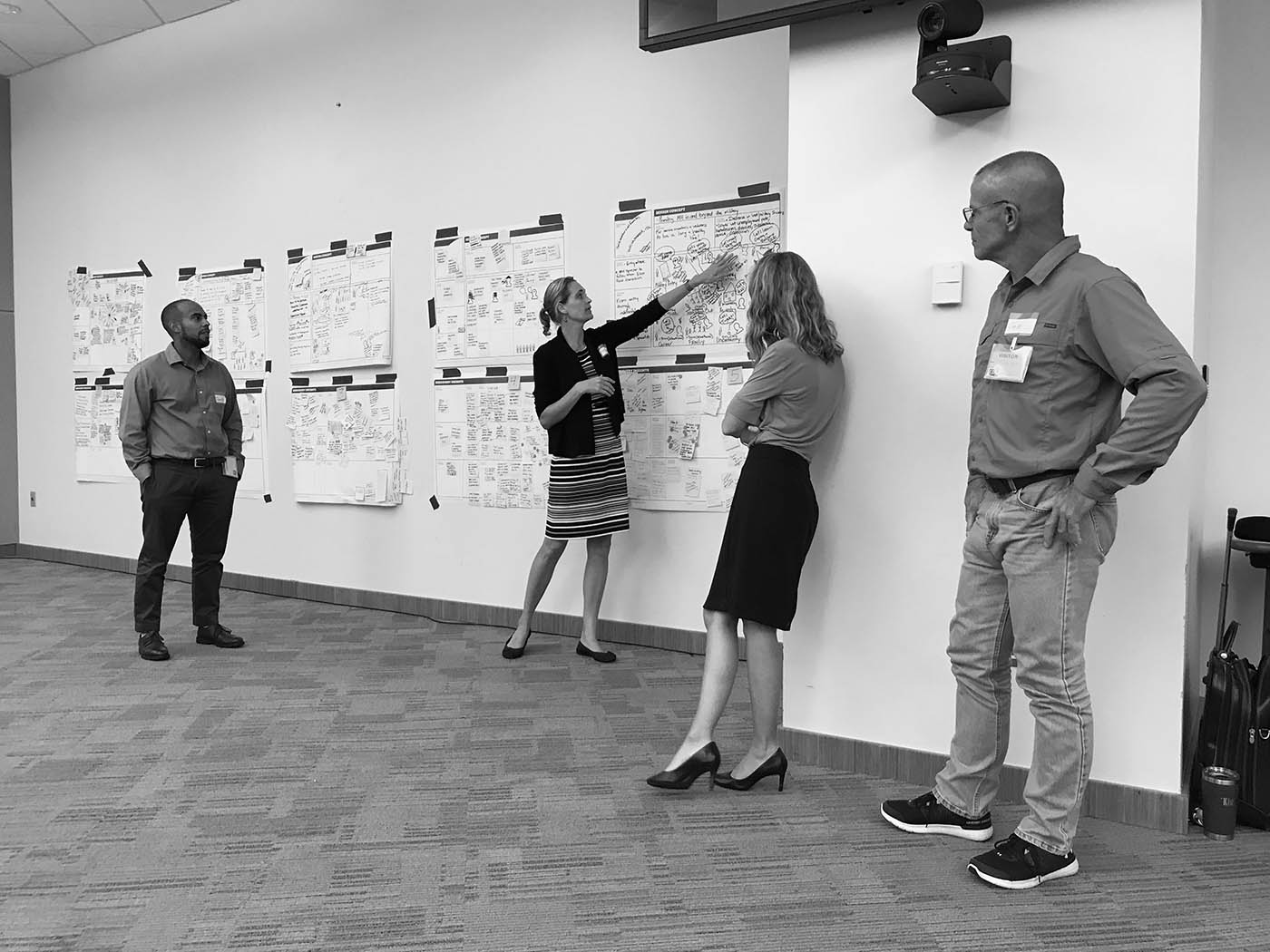What Does a Designer Do?
At times, literal; at other times, vague.
Designers are interstitial thinkers. Our discipline sits between business and academic, liberal arts and engineering, fine art and craft; it is interdisciplinary in its very nature.1

Diagram of the designed choreography of a player moving through the D_Coder app.
Instead of centering on a technical skill or a particular expressive output, Designers specialize in the ability to think from the diverse mental positions of multiple actors, to essentially move between points of view and need in order to create meaningful answers to complex challenges.
If we can accept that the immediate goal of a design is to consciously create a useful product, service, or system for different people interacting in different ways with that product, service, or system, 2 and that its success according to the interactors (not the designers) is the paramount, over-arching purpose of Design as a discipline, then taking an interstitial approach is the only way to consistently achieve that goal across projects. As interstitial thinkers, a Designer does not mind which discipline contributes most heavily to a product, service, or system, or if disciplines are put together in an unorthodox way. “Does it work for the participants 3 is the core question of design. The form that answer takes is of very little importance.

Photo from one of the workshops in the CDC Veteran Suicide Prevention project.
At a more general level, I think of myself and other Designers as specialists in being happy generalists. 4 We bop around different business and technical silos, taking in different viewpoints and exploring different worlds. We bring them together when we need to and separate them out when it’s advantageous to the participants. 5 This is an endlessly fascinating process, and this interdisciplinary, generalist approach seems, in my experience, to be the only way to scale strategic projects undertaken in complex spaces. 6
- For anyone who’s interested in the nitty-gritty skills of my interstitial practice, I would characterize myself mostly as a director of and participant on interdisciplinary teams, with specialization in UX design and front-end engineering. Find me on Github as @anatecture and as a contributor @labOPM. For design world chatter and engagement, I’m @aanatecture on Twitter. On the fine art side, Oliver Lee Jackson’s works inspired the information architecture for this website; let me know if you’d like to discuss. My favorite drawing pen is a Bic 1.6 mm.
- What do I mean by a Product, Service, or System? Please see the On Designed Things article.
- For more on my use of the word "participant", please see the Purpose section of the Human-Centered Design Design Phase Concept Guide.
- I understand that the term “generalist” can see light-minded, and is often deployed as a snub. I reject this characterization as narrow-minded and rather useless when it comes to tackling complex, massively scaled problems.
- For more on this, please see the On Design Thinking article.
- For more on this topic, please see the On Complexity article.